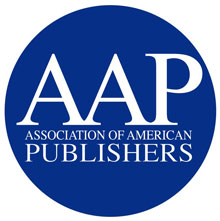June 18, 2018
Department of Education Study Finds College Students Spent $555 on Course Materials in 2015-2016

by Amanda Straub, Special Assistant for Policy
Recent data from the US Department of Education’s National Center for Education Statistics (NCES) 2015-2016 National Postsecondary Student Aid Study shows that undergraduate students spent just $555 on required course materials in the 2015-2016 academic year (total of print-only textbooks, digital textbooks and other required course materials).
This is slightly less than the 2015-2016 data from the National Association of College Stores’ (NACS) Student Watch survey ($602) and the Student Monitor survey ($607).
Additionally, student spending on course materials has been declining. While the NACS 2015-2016 student spend was $602, the 2016-2017 survey showed a $579 spend, a decline of $23 or nearly 4%. Student Monitor’s 2016-2017 student spend figure declined to $543 (from $607 in 2015-2016), a difference of $64 or 10.5%.
According to the NCES study, students spent an average of $422.91 on print-only textbooks, $81.92 on digital textbooks and $50.77 on other required course materials in 2015-2016. Additionally, students at a public year-year school spent a total of $598.34 on required course materials; private nonprofit 4-year students spent $582.58; public 2-year students spent $530.08; and private for profit students spent $440.47.
As expected, spending on course materials also varies by field of study, with the most expensive fields being biological and physical science and science tech ($612.47) and agriculture and natural resources ($612.06). The least expensive field of study is design and applied arts, with students spending only $461.69 per academic year on required course materials.
These numbers contrast the often reported College Board figures of $1,200-$1,400 a year for books and supplies. In fact, this number is frequently misused, as it is actually an estimated average from university financial aid offices on what students should budget for, rather than an actual reporting of student spending.
Publishers understand that college is expensive and are doing their part to keep costs low by offering students a mix of digital materials and innovative course material delivery options in addition to print. Indeed, many publishers offer Inclusive Access programs, which provide access and affordability to course materials by helping students obtain them on the first day of class at a discounted price. These programs can deliver accessible, interactive and personalized digital content in advance of class and are added to students’ tuition and fees. Students can also use loans, grants or scholarships to pay for their materials when registering for class. These programs often provide students with materials that are $50-$80, or up to 70% lower than the price of a traditional new color hardcopy textbook.
In addition to first day access models, publishers often work with producers of open educational resources to help students keep course material costs down by integrating OER into commercial products and supplemental materials. Publishers offer other money-saving alternatives like unlimited subscription models, interactive e-textbooks, e-chapters, loose-leaf editions and rental programs.
